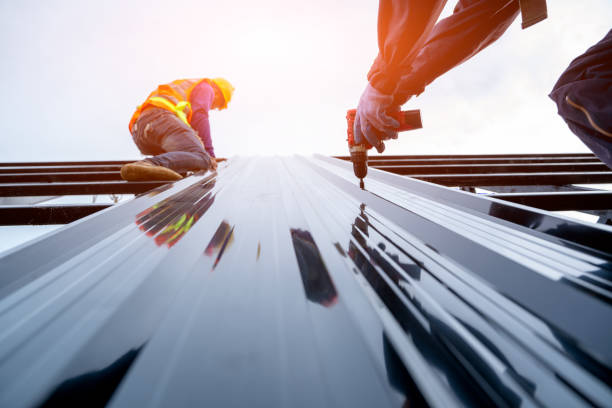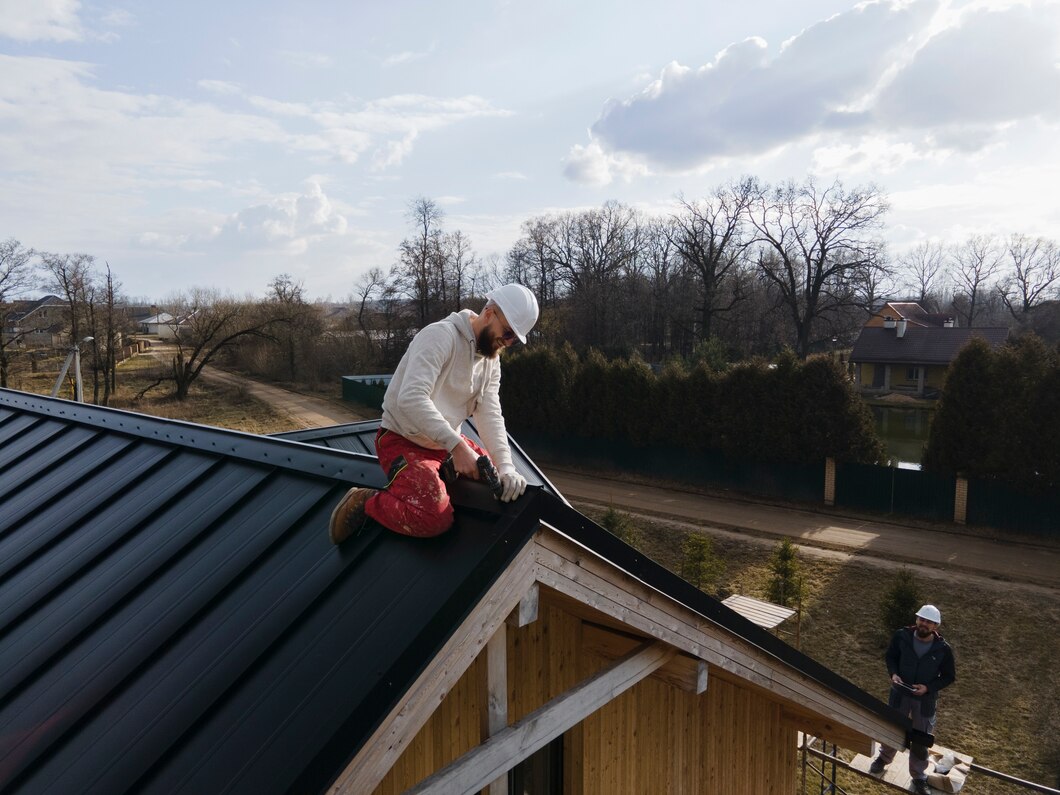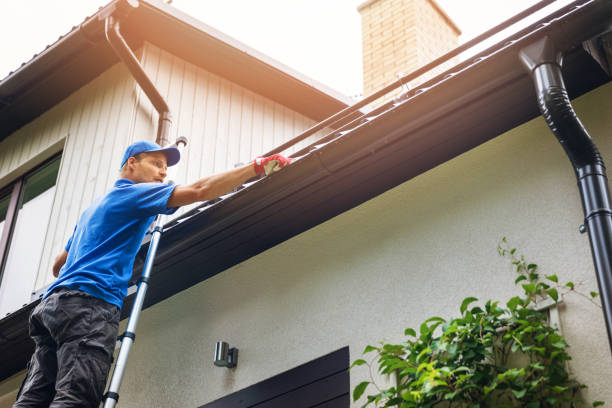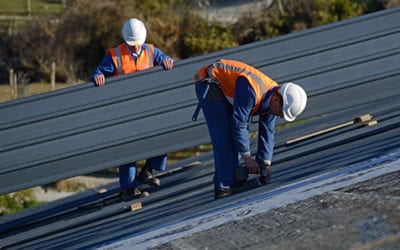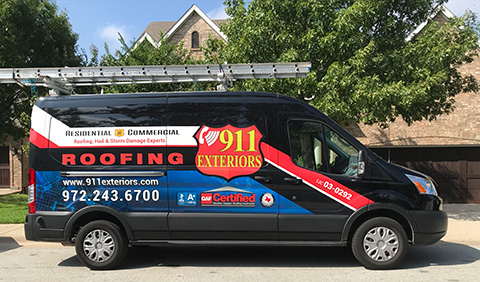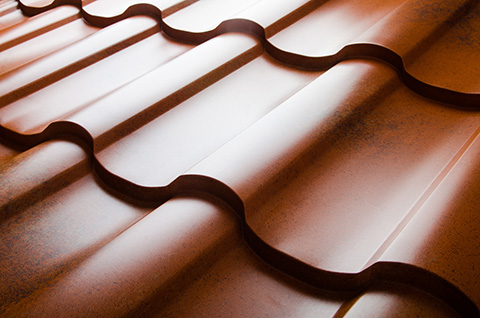When a hailstorm passes through your area, it can leave behind more than just temporary chaos. Your roof is one of the weakest elements in your home during such a storm. You must hire a professional roofing contractor like 911 Exteriors Roofing & Construction for roof inspection if you suspect hail damage as it can weaken the structural integrity, leading to expensive repairs if left unattended.
In this blog post, we will discuss how hail affects roofing, how to identify hail damage, suggested repairs, and tips to prevent problems in the future. Read more below.
The Impact of Hail on Roofs
Hailstones are chunks of ice that vary in size from pea- to golfball-sized and can also be as big as baseballs. The amount of damage depends on multiple factors, including:
- Size of the Hail: Larger chunks of hail have more mass which weighs more so they can do a greater amount of damage due to their sheer mass and force of impact.
- Wind Speed and Direction: High winds can carry hail at increased speeds, augmenting the force of impact.
- Roof Type: Various roofing materials react differently to hail. Asphalt shingles, metal, tile and wood shake roofs, each has different strength.
- Roof Age and Condition: Older, poorly maintained roofs are more vulnerable to damage.
Also Read: What size hail can damage a roof?
Hail damage isn’t always immediately visible, but over time, it can compromise the roof’s protective layers and cause leaks, mold growth, and even structural failure.
How to Identify Hail Damage on Your Roof
Severe weather can be damaging to roofs, hurricane damage is often seen after the season, therefore following a storm it’s imperative to make sure your roof isn’t impacted. Some indicators you can keep an eye out for are:
1. Visible Shingle Damage
- Dents or cracks in shingles
- Granule Loss on Asphalt Shingles, exposing the underlying layer
- Fractured or broken shingles
- Shingles with soft spots or bruises when touched
2. Gutter and Downspout Damage
- Granular accumulation of shingles in gutters
- Dents or cracks in metal gutters or downspouts
3. Damage to Other Exterior Elements
- Dented or cracked siding
- Damaged skylights, vents, or chimney flashing
- Broken or cracked windows
4. Water Leaks and Stains
- Ceiling or wall water stains in your house
- Lingering moisture in the attic or insulation
If you notice any of the signs mentioned above, it is important that you act quickly to prevent further damage.
What to Do After Hail Damage
If you think your roof has been damaged by hail, here are the steps you can take:
1. Conduct an Initial Inspection
You can use a binocular or drone to inspect your roof from the ground. Resist the impulse to get up on the roof yourself; hail damage can make surfaces slippery, and dangerous.
2. Document the Damage
Make sure that you take clear photos and videos of any visible signs of hail damage. That documentation can be helpful for insurance claims.
3. Reach out to Your Insurance Company
Inform your insurance company about the damage. They might send an adjuster to evaluate the extent of the damage and decide whether to cover repairs or a replacement.
4. Hire a Professional Roofing Contractor
A professional roofer can do a complete inspection, determine the extent of the damage, and then recommend repairs. Select a licensed and insured contractor with experience in repairing hail damage.
5. Provisional Repairs to Avoid More Damage
If there is water infiltration, place tarps to prevent further damage until repair work is started.
Repair & Replacement Options
Your roof might need some repairs or a complete replacement depending on how bad the hail damage is.
Minor Repairs
- Replacing the damaged shingles
- Patching up little dents or cracks
- Resealing flashing or vents
Roof Replacement
Your insurance might even approve a full roof replacement if the damage is significant. The best long-term solution is often to replace the entire roof, so you know the roof is sound and future leaks or structural issues won’t occur.
Preventing Future Hail Damage
Although you can’t prevent hailstorms from happening, you can take measures to reduce potential damage to your roof.
1. Install Impact-Resistant Shingles
Impact-resistant roofing materials like Class 4 shingles can withstand hail impact better than regular shingles. They can help mitigate damage, and prolong the life of your roof.
2. Regular Roof Maintenance
- Be sure to conduct annual roof inspections to identify and address weak spots
- Clear gutters to prevent water from harvesting
- Prune tree branches that hang over your roof that could fall on your roof during a storm
3. Think About a Protective Roof Coating
Depending on your roofing materials, you may be able to apply protective coatings that add an additional layer of resistance against impact damage.
4. Install Roof Features, Hail Guards
Skylights, vents and other vulnerable areas can be covered with hail guards to reduce the chances of impact damage.
Hire Us for Inspecting Hail Damage on Your Roof
At 911 Exteriors Roofing & Construction, our team of skilled roofers pay attention to detail to identify hail damage on the roof. You can trust us for a thorough inspection and durable repairs or replacement. Call us today to book an appointment today.

